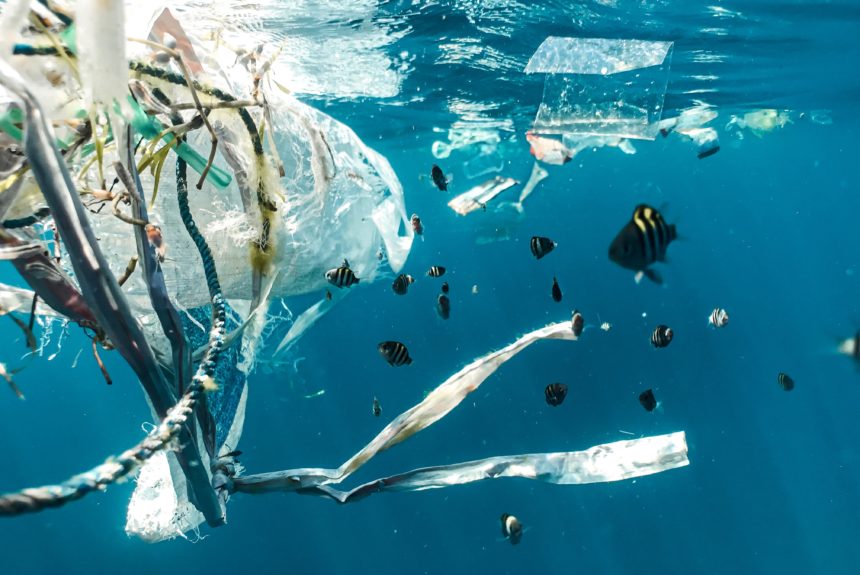Every year, humans dump eight million tons of plastic trash into the world’s oceans. That’s nearly 17.6 billion pounds of plastic waste–or roughly the weight of 57,000 blue whales. According to the nonprofit environmental group Ocean International, the amount of plastic material in the ocean will outnumber all the world’s fish by 2050. Tackling the colossal challenge of marine pollution is daunting, but several dedicated firms are making significant strides to address the issue.
Firms like Clear Blue Sea, the creator of FRED, the “Floating Robot for Eliminating Debris.” The San Diego-based nonprofit is committed to developing robotic solutions for removing plastic pollution from oceans, rivers, and waterways. The marine technology that comes together to create FRED can withstand bad weather and protect sea life while removing plastic from five millimeters to five meters long. Removing small-sized plastics is crucial for removing microplastic that can do significant damage to aquatic food chains. The project is funded entirely by a group of unpaid interns and some small donations.
The robot is powered by solar panels and generates no pollution. FRED is also equipped with acoustic pingers to warn animals of its presence. The device moves slowly to pick up floating plastic and make way for marine life.
“FRED moves really slowly to make sure animals move out of the way,” said Kim-Ashleigh Mostert-Freiberg, a business manager at Clear Blue Sea.
So how exactly does FRED work? FRED is equipped with a porous conveyor belt that can pick up floating waste within its range while allowing water to seep through. The trash then gets stored inside the device until the bins reach maximum capacity. Once overflowing, FRED is sent to a mothership or back to land to offload its contents and receive repairs if needed. Plastic is processed for recycling or provided to scientists for research. Waste can also be recycled for more creative ends, like making stuffed animals.
FRED is currently in its prototype phase, where it is undergoing testing around San Diego Bay.
Clear Blue Sea eventually hopes to send fleets of 100-foot FRED’s into the Great Pacific Garbage Patch to help clear up the tremendous amount of unclaimed marine debris in the area. According to Mostert-Freiberg, the company also wants to release an instructional package in the public domain so users can create many more FREDs.
But FRED is not the only species of aquatic trash collector roaming the seas. “Jellyfishbot,” developed by French startup IADYS, is similarly marketed as “an innovative robotic solution for collecting marine waste.” The device has already been launched in 15 French ports and exported to Singapore, Japan, Norway, and Switzerland.
Like FRED, Jellyfishbot can collect aquatic waste and surface oil. The compact, bright yellow vehicle can easily squeeze into narrow spaces in dense seaside ports and marinas to trap debris into a net dragged behind its twin hulls.
“It can go everywhere,” said the company’s founder and undersea robotics engineer Nicolas Carlesi.
The electric marine drone has collected used face masks, discarded plastic bottles and bags, snack wrappers, and cigarette butts. According to its website, Jellyfishbot has been used to clean up several oil spills and is used regularly in industrial sites.
Other companies have jumped into the robotics innovation waters, developing new cleanup solutions that were not feasible only a few years ago, including:
- Mr. Trash Wheel, “a semi-autonomous trash interceptor” stationed in the Baltimore River.
- Waste Shark, an autonomous trash-collecting aquadrone positioned in Rotterdam harbor.
- The Seabin, a “trash skimmer” that acts like a sinkhole for nearby floating debris.
- Trash Hunter, a manned technology vehicle that picks up macroplastics in harbors, rivers, and lakes.
Plastic pollution is not only damaging to the environment but creates real economic harm. Plastic litter that breaks down into microplastics disrupts the food chain, altering the reproductive system of fish and stunting growth. Ocean plastics harm the tourist industry, which relies on the aesthetic appeal of clean beaches and waters to attract tourists. It is estimated that the global economy loses up to $2.5 trillion every year from damage to fisheries, shipping, and tourism. Engineering novel ways to keep our seas clear is vital to the health of marine ecosystems and humans alike.
Nathalie Voit is a freelance content creator and a graduate of the University of Florida. She is an alumna of The Heritage Foundation’s Young Leaders Program.
The views and opinions expressed are those of the author’s and do not necessarily reflect the official policy or position of C3.
